Bacteria are everywhere, from the top of the windswept cliffs of Dwejra, Gozo, right to the core of the ancient catacombs in Rabat, Malta. Anne Marie Dimech met Dr Gabrielle Zammit to learn about the unique bacteria discovered growing on artworks in ancient Maltese temples and how these bacteria could be useful to medicine.

Nature has provided the source for several medicines that save lives on a daily basis. Many medicines currently in use were originally derived from animals, plants, and microbes. These include the painkillers morphine and aspirin, anticancer agents such as vincristine and vinblastine, and many antibiotics including penicillin. With all that has already been found, it is hard to imagine that there is anything left to discover. Dr Gabrielle Zammit (Department of Physiology and Biochemistry, University of Malta) showed me just how wrong I was. Dr Gabrielle Zammit is currently working on sequencing the genome of new strains of cyanobacteria, an ancient type of photosynthetic blue-green bacteria, first extracted from Maltese catacombs. As we settle down in the lab, I learn that Zammit’s initial involvement in research was far-removed from the workings of subterranean bacteria and dealt with endemic shrubs living on the sheer, coastal cliffs of the Maltese islands. It is soon evident that Malta is the one seamless thread that runs through the heart of all of her diverse research. She has always been aware that ‘although Malta is tiny, it is unique in its natural history, biodiversity, and cultural heritage.’ It is this awareness, together with her love of nature, that led her to approach leading botanists Edwin Lanfranco and Professor Radmila Vujicic for her undergraduate and postgraduate research.
Saving the shrubs
Zammit developed an efficient way to produce a large number of two endemic shrubs in the lab (using micropropagation): the Maltese Cliff-orache (Cremnophyton lanfrancoi) and the Maltese Everlasting (Helichrysum melitense). Both shrubs grow on rocks, technically called a rupestral habitat, and are found growing along small areas of the northwestern and southern cliffs of the Islands. In Malta, the project was the first to try using modern plant cloning techniques to cultivate local endangered plants. These two plants were chosen since they spread and grow very slowly in the wild. Coupled with human pressures, this resulted in dwindling populations, and the plants have been slapped with a ‘critically endangered’ label on the IUCN Red List of Threatened Species, which is just one step away from extinction. So important are these plants, that even Zammit needed a special permit to take plant cuttings for her research to try and save them.
Once the cuttings were in hand, tiny sections of plant tissue were extracted from them. These were cultured in media with different growth hormones to identify the culture medium that enabled the growth of masses of indifferentiated cells—a growth callus—as well as shoots and roots in sterile glass jars. Methods were then developed to transfer the plantlets from laboratory growth rooms to controlled ambient greenhouses and shaded glasshouses. The shrubs were successfully rejuvenated and planted in locations ranging from the University’s botanic gardens to other public gardens, such as Ġnien Indipendenza in Sliema. Some of the plantings are still flowering 15 years later, therefore helping to ensure the continued existence of these two very important shrubs.
The Maltese Cliff-orache, Cremnophyton lanfrancoi, was described by two Sicilian botanists and named after Edwin Lanfranco. A paper recently questioned its placement in the genus Cremnophyton suggesting it should be moved to the related Atriplex—although still a matter of hot discussion. Its natural habitat are the seaside cliffs along the northwestern and southern coast of Malta and Gozo, but it now grows in an area smaller than 100 km2. It became critically endangered due to a combination of factors, which include an endangered habitat, replacement by invasive alien species, and very low regeneration due to an insect (a parasitic hymenopteran discovered by Zammit, belonging to the same order as bees) that feeds on the endosperm. Apart from the insect, a fungus that seems to infect all mature plants, limiting their ability to reproduce.
Going underground
After this research, Zammit started lecturing biochemistry to degree students in artwork conservation. This helped her marry her area of expertise with another great passion of hers—art.
During this time, she met many conservators, curators, and restoration architects who, discussed with her the nature of growths they saw on underground wall paintings, such as in catacombs and hypogea. Zammit explains that traditionally, ‘even in Melitensia, historians and curators used terms such as moffa, or ħass, indicating that the films were biological. However, there was no knowledge of what was actually going on because no systematic studies had ever been carried out.’
For Zammit these ‘alterations’ needed to be documented, described, and mapped. Discovering the nature of the growths, and knowing whether they were chemical or biological, would help to find ways to control or prevent their development and mitigate damage. Inspired by these discussions, she contacted one of this field’s pioneers, phycologist Professor Patrizia Albertano (University of Rome). Her initial study turned into a fully-fledged Ph.D. project and Professor Albertano eventually became her supervisor. To figure out what these ‘alterations’ were, Zammit also collaborated with research teams from the Spanish National Research Council, the National History Museum (UK), and the University of South Bohemia (Czech Republic). The research performed, revealed a wealth of knowledge on how biological and chemical phenomena were deteriorating priceless art works.
The Maltese Everlasting, Helichrysum melitense, prefers sunlight and grows on intact limestone coastal cliffs. Only one population remains on Gozo and Fungus Rock, covering an area smaller than 25 km2; this shrub is probably extinct in the wild in Malta. This has happened due to invading alien species and a drastic decrease in its natural environment because of development.
Studying rocks
Zammit researched the ancient Ħal Saflieni Hypogeum (see THINK issue 10, pg. 34, The Death of the Temple People) and three paleo-Christian catacomb sites (St. Agatha’s Crypt and Catacombs, St. Paul’s Catacombs, and the Abbattija tad-Dejr Catacombs). With the necessary permits in hand, she first took non-invasive samples from wall paintings, ochre inscriptions, and ancient mortars. To understand the various layers of these sites she also took tiny 1 mm micro-invasive samples. She examined them under various microscopes and saw that the ‘alterations’ were biofilms made up of cyanobacteria and other bacteria, microalgae, fungal spores, and occasionally, moss.
“The underground sites are strangely good places for these life forms. A bit of light enters through entrances and artificial lamps. “
The underground sites are strangely good places for these life forms. A bit of light enters through entrances and artificial lamps. The temperature is stable at a reasonable 19–21°C throughout the year, and humidity levels are constantly above 97%, so moisture is plentiful. The biofilms are held together by a thick, sticky substance made up of various sugars called the exopolysaccharide matrix. This matrix is created by the organisms to help them survive. It aids their adherence to the surface to infiltrate it. It also helps capture moisture and slowly release it for the growing microorganisms. Zammit analysed the chemical makeup of the samples using techniques called Elemental Analysis (SEM-EDS), X-ray micro-diffraction (XRD), and X-ray fluorescence (XRF).
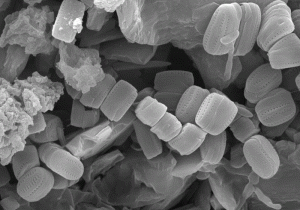
She identified soluble salts like halite (sodium chloride) and gypsum (calcium sulphate) that were thought to be reaching the catacombs by rising through the ground or by infiltrating the ceiling. Cyanobacteria were commonly found growing on the gypsum layers, probably because they use the gypsum as a source of sulphur, an element required for their growth. Halite helps the microorganisms dissolve the rock surface, which is composed of different forms of calcium carbonate.
Much of the damage caused to wall paintings by these microorganisms is because they dissolve calcium carbonate. Zammit then used other techniques to show that the cyanobacteria were forming calcite crystals around them. The bacteria dissolve the calcium carbonate then re-form it by biocalcification in specific shapes and sizes depending on the type of bacteria. These processes lead to the formation of layers of biomediated calcite over the wall paintings that deteriorate these artworks.
Sequencing new microorganisms
Zammit’s research did not stop there. She next turned to focus on the microorganisms forming these biofilms. She cultured and identified these fungi, chemoorganic bacteria, cyanobacteria, and microalgae. They now form part of an extensive culture collection of hundreds of different strains—many are new to science. Each strain was studied to identify every stage of the life cycle, the external and internal arrangement of the cell and their genetic makeup. The genetic studies sequence specific parts of the strain’s genes to be able to compare them with other species’. This is done using online databases to help describe and classify them.
In this way, Zammit discovered a group of cyanobacteria made up of reddish filaments that have a conspicuous photosensitive tip. The filaments are able to glide to the top of biofilms to be closer to light. The group was composed of seven different strains that are 99% similar amongst themselves, but are only 92% similar to the Leptolyngbya genus of cyanobacteria with which they were normally clustered. 92% is low in genetic terms (humans are nearly 99% similar to chimps), which meant that these strains contained a new genus and species that Zammit named Oculatella subterranea. The first part of the name refers to the photosensitive tip, or ‘small eye’ which features in all the strains. Other groups of novel strains are presently being studied.
The potential is great, and amongst many possible applications, this sequencing may lead to the development of new medicines.
Zammit is presently collaborating with medical geneticist, Professor Alex Felice to sequence the whole genomes of these new strains of cyanobacteria and microalgae. When genes are read they produce proteins, in our case responsible for eye colour, hair colour, height, and other features. For these microorganisms, this can relate to how sensitive they are to light or the substances they can produce. She is translating the vast amount of data that genome sequencing generates into protein structures using bioinformatics tools. It allows the researchers to build a picture of how the strains metabolise and synthesise different sugars, fatty acids and antibiotics. This picture is needed to figure out how the microorganisms function as a living system that influences the effect they have on their environment. It also facilitates the genetic engineering of the microorganisms, so that they can be used in the industrial production of specific molecules. Bacteria are already vital in making insulin available for diabetics around the world. The potential is great, and amongst many possible applications, this sequencing may lead to the development of new medicines.
Zammit is passionate about the new developments her research has taken—from saving plants to saving human lives. Her love of Malta’s natural and cultural heritage has driven her work to safeguard Malta and its environment. Although one person’s research is only a sliver in the contribution to scientific knowledge, every step is vital to create a picture that can save others, and perhaps with these efforts nature will provide yet another medicine.
Cyanobacteria are believed to have been among the first living organisms to colonise the earth and to give it its oxygen-rich atmosphere. This eventually let human beings and a host of other animals evolve. Cyanobacteria are unique in being bacteria that can phosynthesise, glide without the aid of flagellae and fix nitrogen through specialised cells, while adapting and surviving in hostile environments.
Apart from their importance in evolution, cyanobacteria have recently come back into the spotlight because of wide-ranging biotechnological applications. They are being studied to make biofuels and help degrade plastic. They are also used in the production of cosmetics and lubricants. Molecules made by these bacteria have shown antiviral, antibacterial, antifungal and anticancer properties that can lead to the production of new medicines.
Further reading
- De Leo F., Iero A., Zammit G., Urzì C. (2012) Chemoorganotrophic bacteria isolated from biodeteriorated surfaces in caves and catacombs. International Journal of Speleology 41(2): 1-12.
- Zammit G., Billi D., Shubert E., Kastovsky J., Albertano P. (2011) The biodiversity of subaerophytic phototrophic biofilms from Maltese hypogea. Fottea 11 (1): 187–201.
- Zammit G., Billi D., Albertano P. (2012) The subaerophytic cyanobacterium Oculatella subterranea (Oscillatoriales, Cyanophyceae) gen. et sp. nov.: a cytomorphological and molecular description. Eur. J. Phycol. 47(4): 341-354.
- Zammit G., Sanchez-Moral S., Albertano P. (2011) Bacterially mediated mineralisation processes lead to biodeterioration of artworks in Maltese catacombs. Science of the Total Environment 409: 2773-2782.

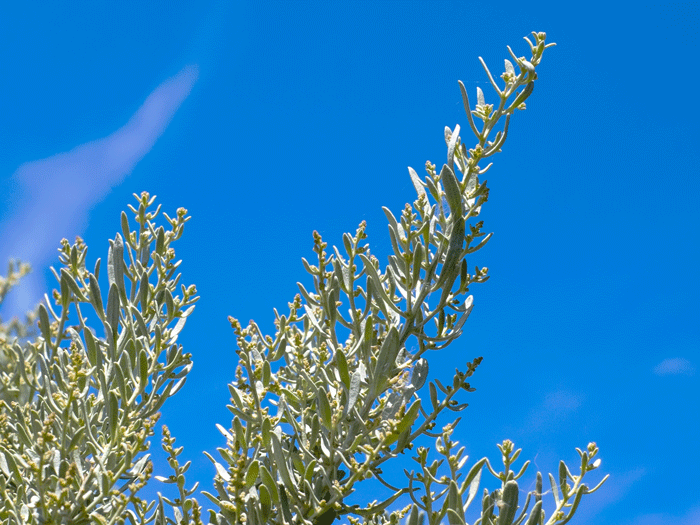
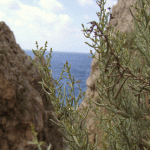
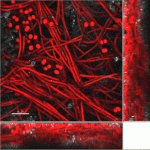


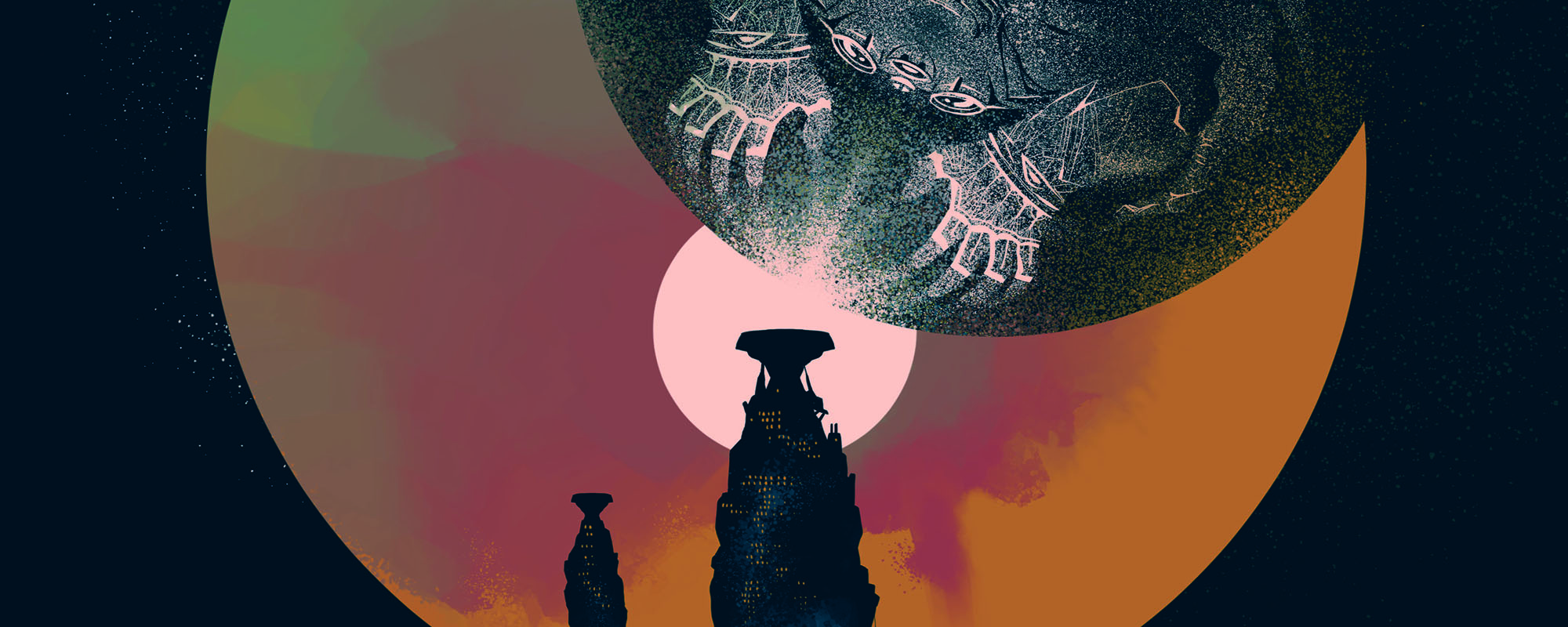
Comments are closed for this article!